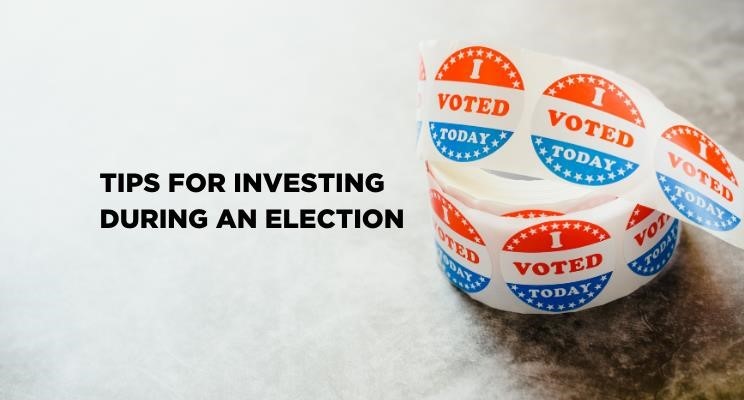Investing During an Election

Elections can move the market, but that doesn’t mean you should change your approach
Like any big news event, U.S. presidential elections can cause ripples and even waves in the stock market. In November 2016, for example, Donald Trump’s victory sent Dow Jones Industrial Average futures plunging 900 points on election night, as investors reacted to the unexpected outcome. The next day, markets shot back up, rallying sharply.
That kind of volatility may sound like a big deal, but election-related market movements don’t necessarily have an effect on long-term market returns. What’s more, changing your investment strategy in response to the market’s short-term ups and downs can end up doing more harm than good. For instance, selling stocks during a sudden dip can mean locking in your losses and missing out on market rebounds.
Here’s a look at how elections can move the market, and how to stay invested for the long term despite short-term volatility.
The election effect
Generally speaking, elections don't affect the underlying trends shaping the stock market and the economy in the long term. These trends tend to continue across administrations after the White House changes hands. The rising stock market leading up to the 2016 election continued to rise in the months and years after the election, despite volatility on Election Day. Similarly, the unemployment rate was on a steady decline, and it continued to fall after the election.
That said, new leadership in Washington can mean shifts in tax law, regulations, and spending priorities, all of which could affect businesses. Investors watch new administrations closely, and stock prices can rise or fall if they anticipate substantive policy changes. The two major parties have different reputations in these areas, but the stock market has soared and struggled under both Democratic and Republican administrations. When considering markets over the long run, the impacts of elections—positive or negative—are pretty short-lived. As a result, investors should remain focused on long-term strategies rather than making investment moves in response to short-term volatility.
How to stay invested for the long term
The time-tested principles of long-term investing hold true even during election years:
- Build a long-term plan and stick to it. Long-term investment plans are built with your goals, time horizon, and risk tolerance in mind. These plans account for how much money you'll need to save over a given period to reach your goal, and how much risk you’re willing to take on to get there. This risk is managed through asset allocation and diversification. A well-built, long-term plan already accounts for short-term fluctuation, like the potential ups and downs elections can cause. Sticking to the plan can help you more safely ride out these periods.
- Focus on the big picture. Stock market downturns are a natural part of the market cycle. In the past, markets tend to be up over long periods. In fact, the market has historically produced positive returns over 15-year rolling periods. Sticking with your long-term investing plan can help ensure you capture some of these gains.
- Avoid making emotional decisions. Humans are not always rational beings. News stories about market dips around elections may make you feel prone to sell. But reacting emotionally to short-term market developments can have long-term consequences. As a result, you may want to limit how often you look at your investment portfolio, and if necessary, avoid news that inflates the economic consequences of the election.
Remember, many variables can affect the stock market in the short term, and presidential elections are just one of them. Because short-term periods of volatility are a natural part of the market cycle, a strong investment plan based on your personal goals, time horizon, and risk tolerance will already take that volatility into account.
Sources:
https://money.cnn.com/2016/11/09/investing/dow-jones-trump-wins-election/?iid=EL
https://www.bls.gov/charts/employment-situation/civilian-unemployment-rate.htm
https://advisor.mp.morningstar.com/resourceDownload?type=publicForms&id=3f9dff3c-f085-47a1-98ba-0bc008df9f25
Material provided by the Oeschli institute, an independent third party, for Advisor use. Opinions expressed are those of the author and not necessarily those of Raymond James.
The information contained in this report does not purport to be a complete description of the securities, markets, or developments referred to in this material. The information has been obtained from sources considered to be reliable, but we do not guarantee that the foregoing material is accurate or complete. Investing involves risk and you may incur a profit or loss regardless of strategy selected. Past performance does not guarantee future results. Future investment performance cannot be guaranteed, investment yields will fluctuate with market conditions.
